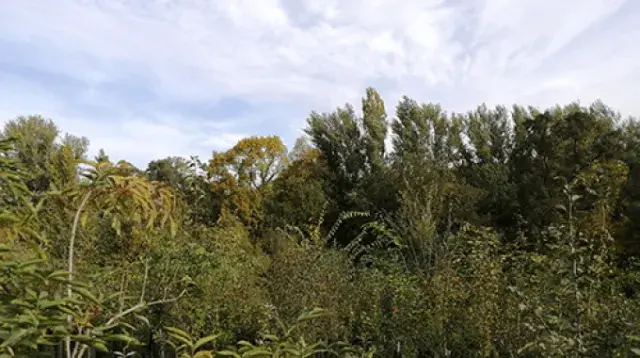Silva: Planting a native forest
Help a man to plant a native forest in Le Tarn.
What constitutes a native plant?
In botany, in contrast to the term “domesticated”, “native” refers to plant species naturally occurring in a region or ecosystem without human intervention.
A new… native forest

5,000 trees to be planted
Yann Roques has always had a dream: to plant a forest. His dream is soon set to become a reality. Surrounded by goodwill, he has launched his project and is preparing to create an entire forest in Le Tarn.
His aim: to plant a maximum of trees on a 1ha parcel of land in Le Garric.
Yann Roques has always had a dream: to plant a forest. His dream is soon set to become a reality. Surrounded by goodwill, he has launched his project and is preparing to create an entire forest in Le Tarn.
His aim: to plant a maximum of trees on a 1ha parcel of land in Le Garric.
Old species from the region
The right selection of species planted was a key success factor for the project. They are called "Native" or "natural" species because they exist in the region since the last ice age, and were able to resist all the climate changes that occurred since. Their chances of survival are much stronger. The selected varieties range from raspberries, country elms, willows, poplars, rosehips, elderberries, cherry trees and many more.
A method inspired by sacred Japanese sites
Yann’s dream is not only to plant a new forest, but to do so using an original method of cultivation: the Miyawaki method (named after its inventor, Japanese botanist Akira Miyawaki). This method is based on the observation of nature in the areas surrounding sacred sites, where humankind dare not meddle and where one finds extraordinary richness…
A rich and diverse method and a great provider of oxygen!
The Miyawaki method creates a biodiversity 100 times richer, with trees growing 10 times faster. This forest could, in time, produce 750 tonnes of oxygen each year, i.e. the consumption of 3,000 inhabitants.
The Miyawaki method
This technique is still seldom used in Europe, in contrast to Asia and Latin America. It consists in planting many different species adapted to the place and to the history of the soil very close together (30 times more densely than in traditional revegetation), then letting nature take its course… Natural selection occurs, the strongest individual plants become established. This enables each species to play an active role in the balance of the forest ecosystem.

Reviving biodiversity
Forests provide refuge and food for many species of birds, insects, small mammals, mushrooms, etc. So when a plant species dies out, nearly 30 species of animals can disappear.
Increasing the number of species promotes biodiversity, creating a rich and fertile land. This is rare in France, where it has become commonplace to create forests of just one or two species (84%).
A shared wealth
Akira Miyawaki’s method also includes a desire to transmit knowledge and to raise awareness about the issues surrounding biodiversity and best practices in terms of cultivation among as many people as possible.
To support this educational dimension and encourage a personal approach from everyone involved, Yann Roques has chosen to crowdfund his project. He received sufficient investment to cover the cost of 5,000 trees to cover the parcel of land, which was kindly gifted to him by private individuals for the project.
The Klorane Botanical Foundation is supporting this fabulous project by providing the finance for some of the trees and plants and by organising for the teams from our head office to spend half a day planting.
To come: a documentary
With sharing in mind, a documentary is being created, filmed from the very outset of the project by Alexandre Leuger (film-maker and friend of Yann Roques). He will be following the developing forest over 3 years, alongside the developing awareness of the people involved.
